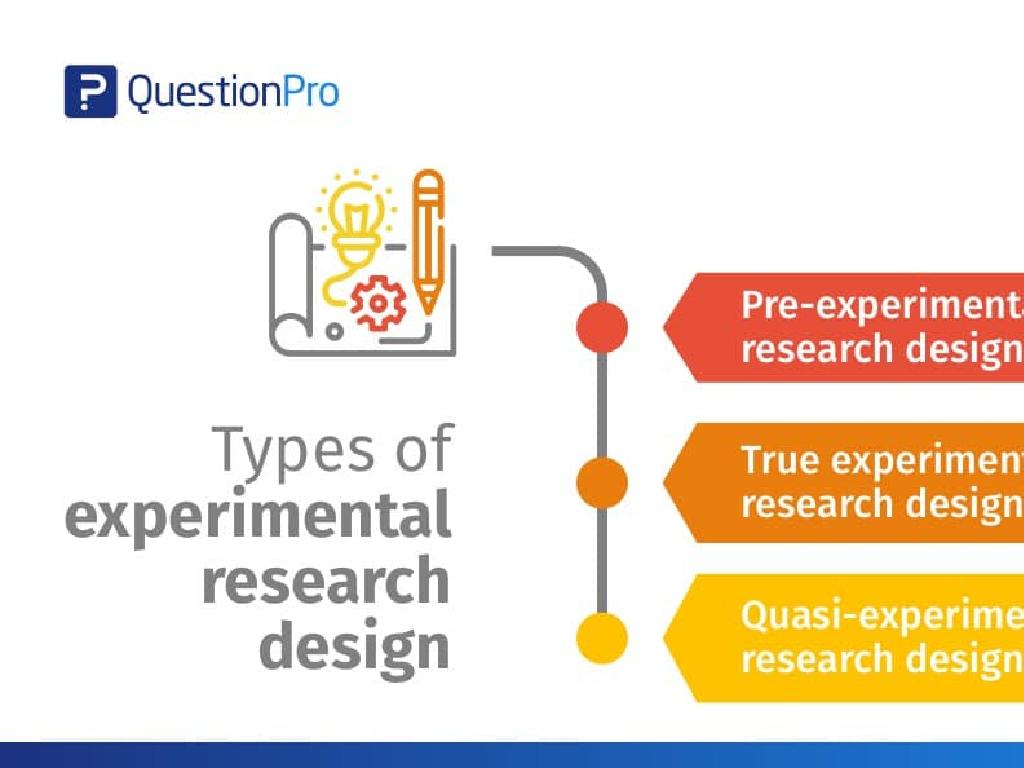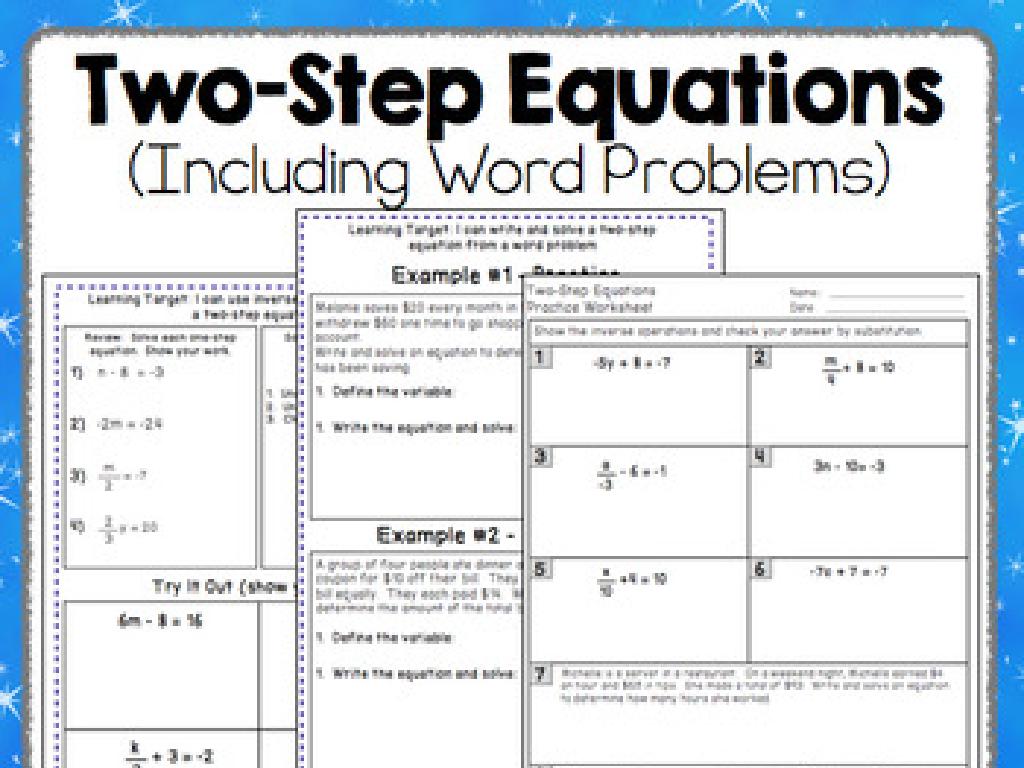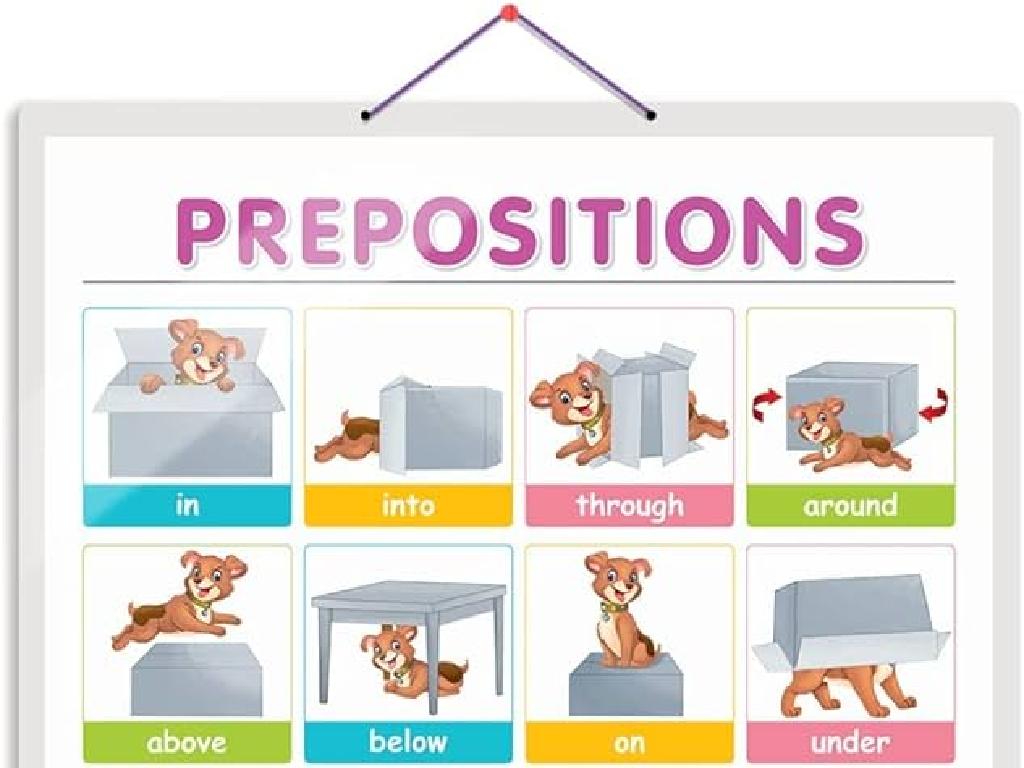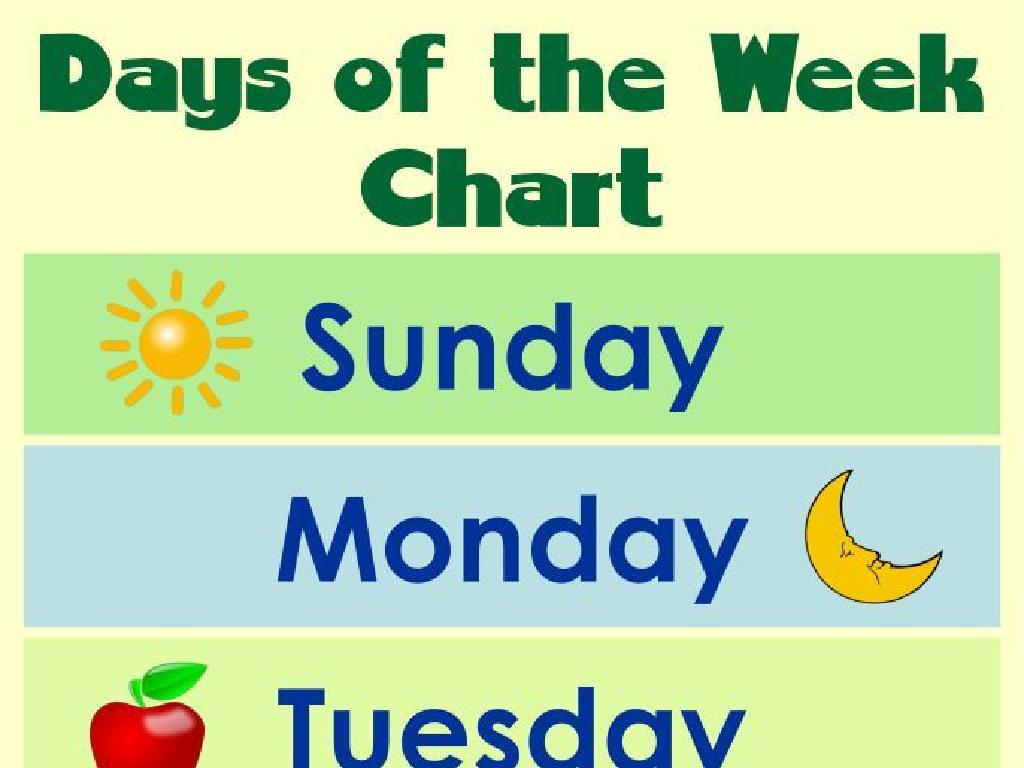Is The Sentence In The Past, Present, Or Future Tense?
Subject: Language arts
Grade: Fifth grade
Topic: Verb Tense
Please LOG IN to download the presentation. Access is available to registered users only.
View More Content
Welcome to Verb Tenses!
– Understanding verb tenses
– Verb tenses tell us when an action happens.
– Defining a verb
– A verb is an action word like ‘run’, ‘think’, or ‘eat’.
– Exploring past, present, future
– Past happened already, present is now, future is later.
– Examples of each tense
– Past: ‘I walked’, Present: ‘I walk’, Future: ‘I will walk’.
|
This slide introduces the concept of verb tenses to the students, emphasizing the importance of time in verb usage. Begin by explaining that verbs are words that describe actions or states of being. Then, focus on the three primary tenses: past, present, and future. Provide clear examples for each tense, using simple and relatable verbs. Encourage students to think of their own examples and consider how changing the tense of a verb can change the meaning of a sentence. This foundational understanding will help them in writing and speaking with correct verb tenses.
Exploring Verb Tenses
– What is a verb?
– A verb is a word used to describe an action, state, or occurrence.
– Verbs as action words
– Think of verbs as words that show what someone or something is doing.
– Verbs show when actions happen
– Verbs tell us if an action is in the past, present, or future.
– Practice identifying tenses
– Let’s find verbs in sentences and decide if the action is past, present, or future.
|
Begin the lesson by defining a verb and emphasizing its role as an action word. Use examples to illustrate how verbs are used to describe what someone or something is doing. Explain that verbs also indicate the time when the action is taking place, which is known as tense. Provide examples of verbs in the past, present, and future tenses. Engage the students with an activity where they identify verbs in sentences and determine the tense of each verb. This will help them understand how verb tenses can change the meaning of a sentence and how to use them correctly in their own writing.
Exploring Past Tense in Sentences
– Understanding Past Tense
– Past tense describes an action that has already happened.
– Examples of Past Tense Verbs
– ‘Walked’, ‘jumped’, and ‘laughed’ are verbs in the past tense.
– Signal Words for Past Tense
– Words like ‘yesterday’, ‘last’, and ‘ago’ often indicate past tense.
– Practice Identifying Past Tense
|
This slide introduces the concept of past tense to the students, explaining that it is used to describe actions that have already occurred. Provide clear examples of past tense verbs to illustrate the concept. Discuss signal words that typically accompany past tense verbs, helping students recognize when a sentence is in the past tense. Encourage students to think of their own examples and to practice identifying past tense in sentences, both in their reading and writing. This will help solidify their understanding of verb tenses as part of their language arts curriculum.
Exploring Present Tense in Sentences
– Understanding Present Tense
– Present tense describes an action happening now.
– Examples of Present Tense Verbs
– ‘Runs’, ‘eats’, ‘writes’, ‘plays’ are happening right now.
– Signal Words for Present Tense
– Words like ‘now’, ‘today’, ‘often’ indicate present tense.
– Practice Identifying Present Tense
– Let’s find verbs in present tense in sentences together.
|
This slide introduces the concept of present tense to the students, explaining that it is used to describe actions that are currently happening or general truths. Provide clear examples of present tense verbs and how they are used in sentences. Highlight signal words that often accompany present tense verbs, which can help students recognize the tense in a sentence. Engage the class with practice sentences where they identify the present tense verbs, reinforcing their understanding of the concept. Encourage participation and provide immediate feedback to ensure comprehension.
Exploring the Future Tense
– Understanding Future Tense
– Future tense describes actions that haven’t happened yet.
– Examples of Future Tense Verbs
– ‘Will dance’, ‘is going to rain’, ‘shall help’
– Signal Words for Future Tense
– ‘Will’, ‘shall’, ‘is going to’, ‘are about to’
– Practice Identifying Future Tense
– We’ll practice with sentences to spot future tense.
|
This slide introduces the concept of future tense to the students, explaining that it is used to describe actions that have not yet occurred. Provide clear examples of future tense verbs and phrases to illustrate how they are used in sentences. Highlight signal words that often indicate the future tense, such as ‘will’, ‘shall’, and ‘is going to’. Engage the class with practice sentences where they can apply their knowledge and identify the future tense. Encourage students to create their own future tense sentences as part of their learning process.
Identifying Sentence Tenses
– How to determine sentence tense
– Look for time-related words and the form of the main verb.
– Let’s practice with examples
– We’ll go through sentences together to spot past, present, or future tense.
– Tips to recognize different tenses
– Notice if the action is completed, happening now, or will happen.
– Activity: Identify the tense
|
This slide is aimed at teaching students how to identify the tense of a sentence. Start by explaining that tense tells us when an action takes place. Introduce keywords that signal different tenses, such as ‘yesterday’ for past, ‘now’ for present, and ‘tomorrow’ for future. Practice with sentences as a class, asking students to identify the tense and explain their reasoning. Share tips like looking for auxiliary verbs or time indicators to recognize tense. Conclude with an activity where students will identify the tense of sentences you provide. This will help solidify their understanding and prepare them for more complex aspects of verb tenses.
Let’s Practice: Identifying Verb Tenses
– Class activity on tenses
– Work in pairs on the worksheet
– Find sentences and determine if they’re past, present, or future tense
– Discuss worksheet findings
– Talk about how you decided the tense with your partner
– Share answers with the class
– Each pair will present a few sentences and their tenses
|
This slide introduces a class activity focused on identifying verb tenses. Students will work in pairs to complete a worksheet where they will identify whether sentences are written in the past, present, or future tense. After completing the worksheet, pairs will discuss their findings with each other to ensure understanding and correct any mistakes. Finally, students will share their answers with the class, fostering a collaborative learning environment. As a teacher, prepare a worksheet with a variety of sentences, facilitate pairing of students, and guide the sharing session to ensure each pair has the opportunity to present. Encourage students to explain why they chose a particular tense for each sentence to reinforce their understanding of verb tenses.
Game Time: Tense Time!
– Engage in an interactive tense game
– Each student will participate
– Discuss answers and learnings
– Why was a sentence past, present, or future?
– Reflect on the activity as a class
– Share thoughts on the tenses used
|
This slide introduces an interactive classroom game designed to reinforce the understanding of verb tenses. Each student will have the opportunity to participate in the game, which will involve identifying whether sentences are in the past, present, or future tense. After the game, the class will engage in a discussion to review the outcomes and the reasoning behind each answer, allowing students to learn from each other’s insights. The reflection part of the activity will help solidify their understanding of verb tenses and encourage them to think critically about language use. For the teacher: Prepare a list of sentences in different tenses before the class. Consider using a digital tool or flashcards for the game. Have a set of guiding questions ready for the discussion to prompt students to think about the context and clues that indicate tense.
Conclusion & Homework: Mastering Verb Tenses
– Recap verb tenses learned
– Review past, present, and future tenses
– Why tenses matter in sentences
– Understanding tenses improves reading and writing skills
– Homework: 15 sentences practice
– Write 5 sentences for past, present, and future tense
– Share your sentences next class
– Be ready to discuss how you used tenses
|
As we wrap up today’s lesson on verb tenses, it’s important for students to understand that recognizing whether a sentence is in the past, present, or future tense helps in both understanding the timing of events and in conveying the correct meaning when writing. For homework, students are to write 5 sentences for each tense, ensuring they apply what they’ve learned. This will help reinforce their knowledge and prepare them for the next class where they will share their sentences and discuss the different tenses used. Encourage creativity and the use of a variety of verbs to make their sentences interesting.






